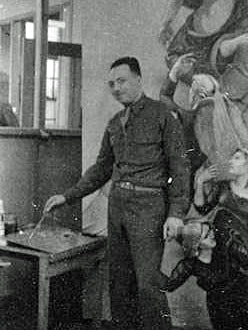
"One Third of a Nation"
One Third of a Nation (1939) by O. Louis Guglielmi is a haunting, surreal meditation on urban poverty and social decay in Depression-era America. Executed in oil and tempera on Masonite, the painting combines Guglielmi’s precise, almost dreamlike realism with stark political commentary. The title refers directly to President Franklin D. Roosevelt’s 1937 inaugural address, in which he declared that “one third of a nation is ill-housed, ill-clad, ill-nourished”—a rallying cry for social reform during the depths of the Great Depression.
Set against a bleak, desolate urban landscape, the composition features abandoned buildings, skeletal trees, and ghostlike figures, evoking a sense of spiritual desolation and economic despair. Guglielmi’s tight, meticulous technique underscores the stillness and emotional gravity of the scene. The empty tenements and crumbling facades are not just symbols of neglect—they represent the fractured American Dream, hollowed out by inequality and suffering.
Influenced by both Surrealism and Social Realism, Guglielmi infused his work with an eerie, poetic ambiguity. While rooted in real-world hardship, One Third of a Nation also projects a kind of psychological landscape—a space where architecture, memory, and silence converge. The few human figures, dwarfed by their surroundings and seemingly trapped in time, reinforce the sense of isolation and abandonment.
Part of the Modern and Contemporary Art collection at the Metropolitan Museum of Art, this painting stands as a powerful example of American political art in the 1930s—unflinching in its social critique, yet lyrical in its execution. Guglielmi’s work, like the title it bears, forces viewers to confront the realities of poverty and disenfranchisement while calling for empathy, awareness, and change.
Choose options


"One Third of a Nation"
About Artist

O. Louis Guglielmi
